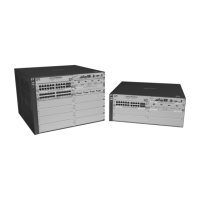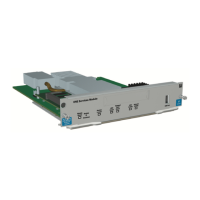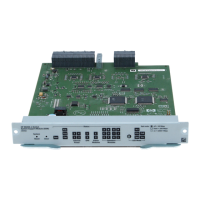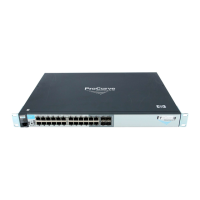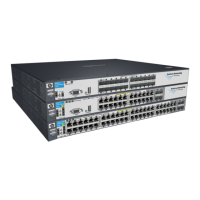Spanning-Tree Operation
802.1D Spanning-Tree Protocol (STP)
Terminology
Term Definition
downlink port A switch port that is linked to a port on another switch (or to an end node) that is sequentially
(downstream port)
further away from the STP root device. For example, port “C” in figure 6-12, above, is a
downlink port.
edge switch For the purposes of fast-uplink STP, this is a switch that has no other switches connected to
its downlink ports. An edge switch is sequentially further from the root device than other
switches to which it is connected. Also termed wiring closet switch or leaf switch. For
example, switch “4” in figure 6-13 (page 6-31) is an edge switch.
interior switch In an STP environment, a switch that is sequentially closer to the STP root device than one
or more other switches to which it is connected. For example, switches “1”, “2”, and “3” in
figure 6-13 (page 6-31) are interior switches.
single-instance spanning A single spanning-tree ensuring that there are no logical network loops associated with any
of the connections to the switch, regardless of whether there are any VLANs configured on
the switch. For more information, see “Spanning Tree Protocol (STP)” in chapter 9,
“Configuring Advanced Features”, in the Management and Configuration Guide for your
switch.
tree
uplink port
(upstream port)
A switch port linked to a port on another switch that is sequentially closer to the STP root
device. For example, ports “A” and “B” in figure 6-12 on page 6-30 are uplink ports.
wiring closet switch Another term for an “edge” or “leaf” switch.
When single-instance spanning tree (STP) is running in a network and a
forwarding port goes down, a blocked port typically requires a period of
(2 x (forward delay) + link down detection)
to transition to forwarding. In a normal spanning tree environment, this
transition is usually 30 seconds (with the
Forward Delay parameter set to its
default of 15 seconds). However, by using the fast-uplink spanning tree
feature, a port on a switch used as an edge switch can make this transition in
as little as ten seconds. (In an STP environment, an edge switch is a switch
that is connected only to switches that are closer to the STP root switch than
the edge switch itself, as shown by switch “4” in figure
6-13, below.)
Switch 4
(4108-Edge)
Switch 3
Switch 1
(Root)
Switch 2
Port 3
Port 5
Link blocked by STP:
1
6
8
LAN
Figure 6-13. Example of an Edge Switch in a Topology Configured for STP Fast Uplink
6-31
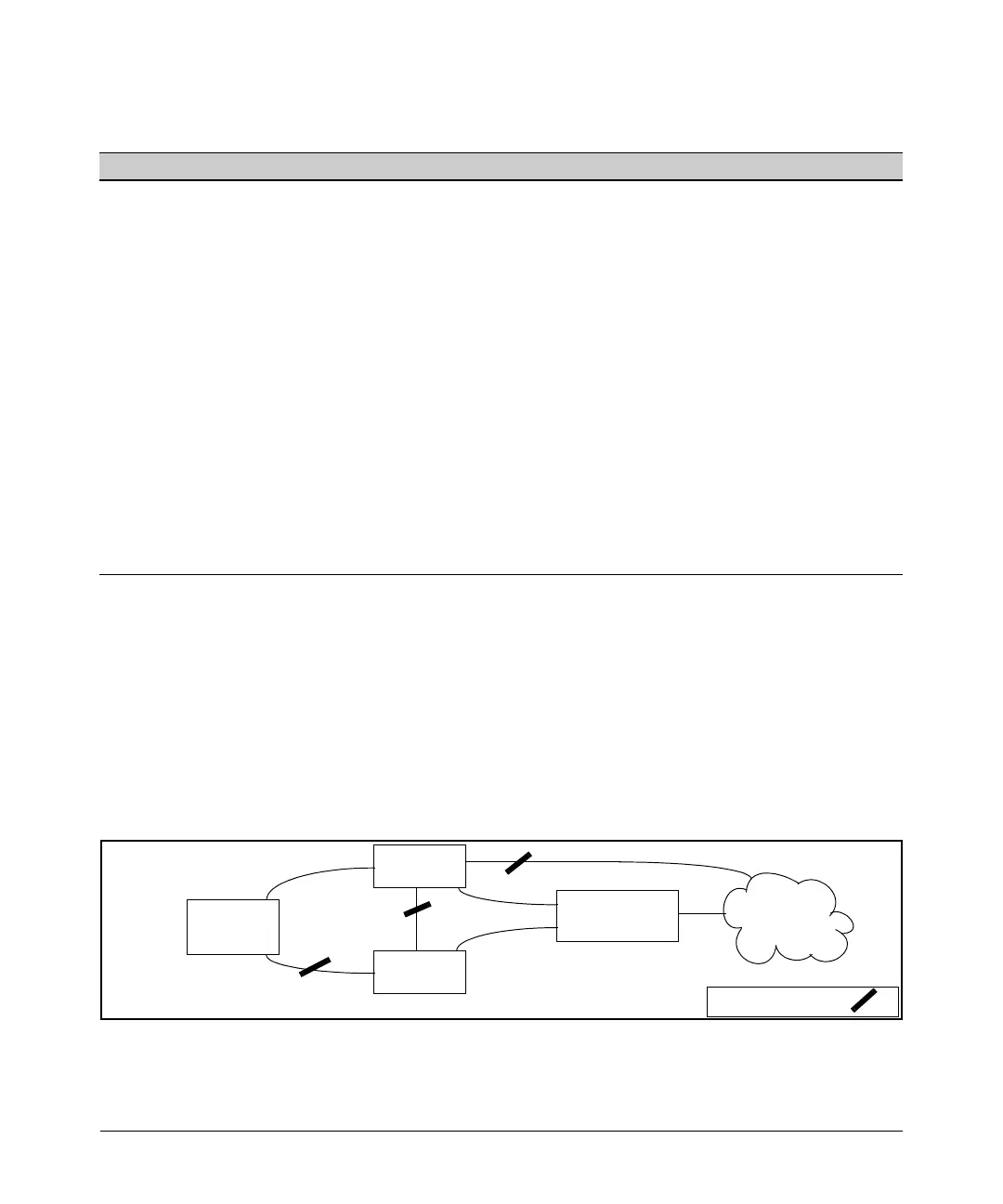